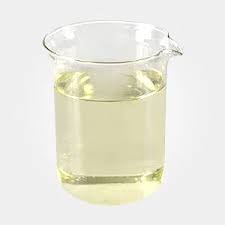**The Great Lung Leap: When Do Babies Start Making Surfactant?**
(When Do Babies Produce Surfactant)
Babies are tiny miracles, and their bodies pull off some incredible feats before birth. One of the biggest? Learning to breathe. But breathing isn’t just about lungs filling with air. It’s about a slippery helper called surfactant. Without it, every breath would be a battle. So when does this life-saving stuff show up? Let’s dive in.
First, what even is surfactant? Picture this: your lungs are like millions of tiny balloons. Each time you inhale, these balloons inflate. When you exhale, they deflate. Now imagine blowing up a balloon coated in glue. It’d stick together, right? That’s what happens without surfactant. This slippery substance coats the lungs, keeping those “balloons” from collapsing. No surfactant, no smooth breathing.
Babies don’t make surfactant right away. Early in pregnancy, their lungs are more like solid glands than air-filled organs. Around week 24, things start changing. Special cells in the lungs—called type II pneumocytes—get to work. These cells are like tiny factories, pumping out surfactant. By week 28 to 32, production kicks into high gear. But here’s the catch: timing matters. A lot.
Why? Babies born too early might not have enough surfactant. Their lungs can’t stay open, leading to respiratory distress syndrome (RDS). This isn’t rare. Preemies often struggle with breathing because their surfactant levels are low. Doctors can test amniotic fluid before birth to check surfactant levels. If a baby has to come early, this info helps them prepare.
Science has found clever ways to help. Synthetic surfactants exist now. Doctors can give these to preemies right after birth. It’s like a quick boost, helping their lungs work until their own surfactant production catches up. This treatment has saved countless lives. Still, nothing beats the real thing. A full-term baby usually has plenty of surfactant, making their first cries strong and healthy.
How do lungs know when to start making surfactant? It’s a mix of genes and hormones. Around that 24-week mark, certain genes switch on, telling the body, “Hey, it’s time!” Hormones like cortisol play a role too. They signal the lungs to mature. Stress during pregnancy can actually speed this up. A bit of stress is good here—it preps the baby for life outside.
Surfactant isn’t just for breathing. It also protects the lungs from infections. The stuff traps germs and stops them from causing harm. Think of it as a bouncer at a club, keeping troublemakers out. This dual role makes surfactant even more vital.
Parents of preemies might wonder: can anything be done to boost surfactant before birth? Sometimes steroids are given to moms at risk of early delivery. These steroids cross the placenta and speed up lung development. It’s like hitting the fast-forward button, helping the baby’s lungs make more surfactant faster.
Nature’s timing is precise. Too early, and the baby faces hurdles. Too late, and… well, babies don’t stay in forever. The sweet spot is around 37 to 40 weeks. By then, the lungs are coated, the surfactant is flowing, and the stage is set for that first breath.
(When Do Babies Produce Surfactant)
Every baby’s journey is unique. Some arrive earlier and need extra help. Others bake a little longer and slide out ready to roar. But behind every cry, every gasp, every sigh, there’s surfactant—the unsung hero of the first breath.
Inquiry us
if you want to want to know more, please feel free to contact us. (nanotrun@yahoo.com)




